This plate has the weapon of the VOC with the date 1728 and the Latin motto, Concordia Resparva Crecunti. That last word is misspelled as it should read as Crescunti. This probably points to a copy, The painting also indicates an inferior work of art. However, the plate does have a trade mark on the back: D4, with what looks like a small heart underneath. Also the earthenware under the glazing is dark grey.
Vraag
Is this an imitation of a Delf plate, or was another company its maker? Does the factory mark mean anything? What is the likely age of the plate?
Afmetingen
222 mm
Collectie
publiekscollectie
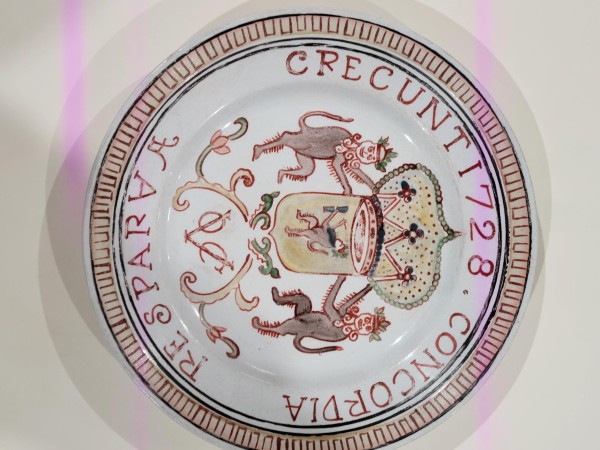
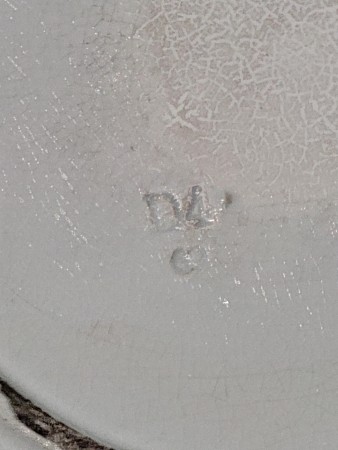
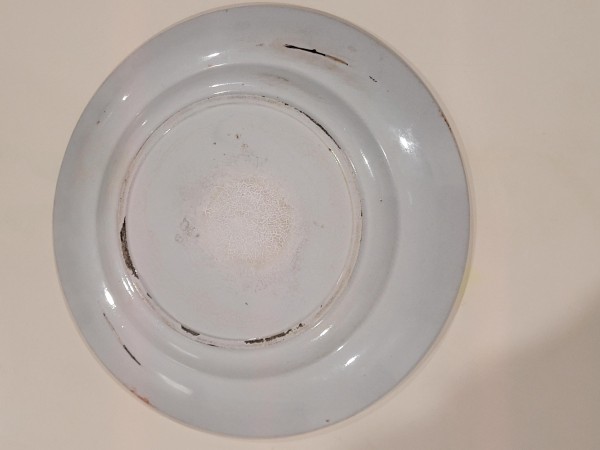
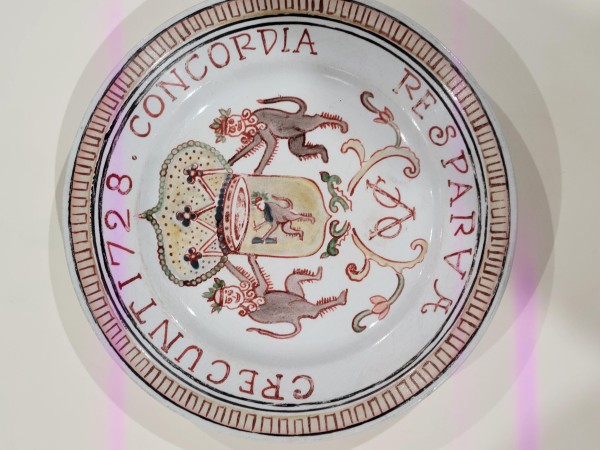











Reacties 2
CONCORDIA RES PARVAE CRESCUNT (through unity small things become great) .is the correct description. Indeed, there are spelling mistakes on your plate. For example, the E is missing in Parvae an res and Parvae are two words, not one.
In my humble opinion this is indeed a copy, so not from the golden age unfortunatly.
Many reproductions were made in the 20th century (especially around 1928 → 200 years of the VOC) for collectors. 20th-century 'Harlinger/Makkumer style' faience, not an official VOC tableware. Why: hand-painted manganese/iron red contours, playful heraldry (mythical creatures/'monkeys'), the VOC motto around the rim, and a completely smooth, white glazed back without turning rings or porcelain-like 'ping'. This fits with revival work from Northern Netherlands (Friesland) – including Tichelaar Makkum and workshops that copied 18th-century Harlinger plates. Such pieces are often unnumbered and sometimes unsigned on the back.
A significant event probably took place in 1728 as a special coin was also minted. Maybe the commissioning of the ships Coxhoorn and Buuren?
some history ;
In the autumn of 1728, the ships 'Coxhorn' and 'Buuren', both newly built, were prepared "for the purpose of picking up tea and other merchandise". The Coxhorn was the first ship to sail directly from Patria to China to load tea. On December 5, 1728, the 'Coxhorn' set sail. The voyage of the ship went smoothly, and in 1729 it arrived in Canton. Trade there and the return journey were successful, and the cargo generated a good profit.The Coxhoorn was laid up in Amsterdam on November 28, 1741.
The Buuren was in use by the VOC from 1728 to 09/12/1729 (wrecked, Noorderhaaks)
under example of similar copies.
I'm sure experts will be able to tell more about this plate.
mvg Franky
Verdict:
Analysis:
Add new comment
Only logged in users can post comments
Log in or register to post comments